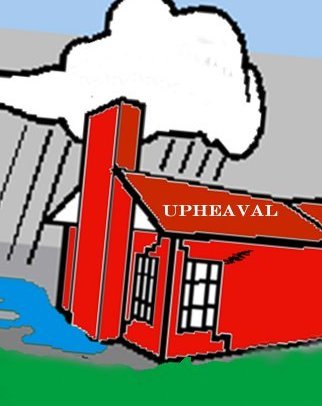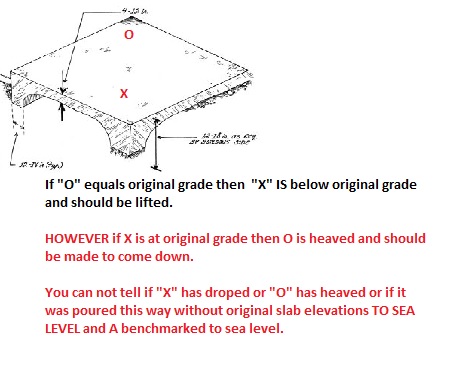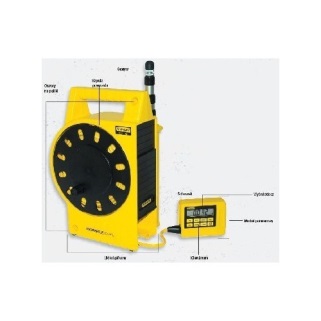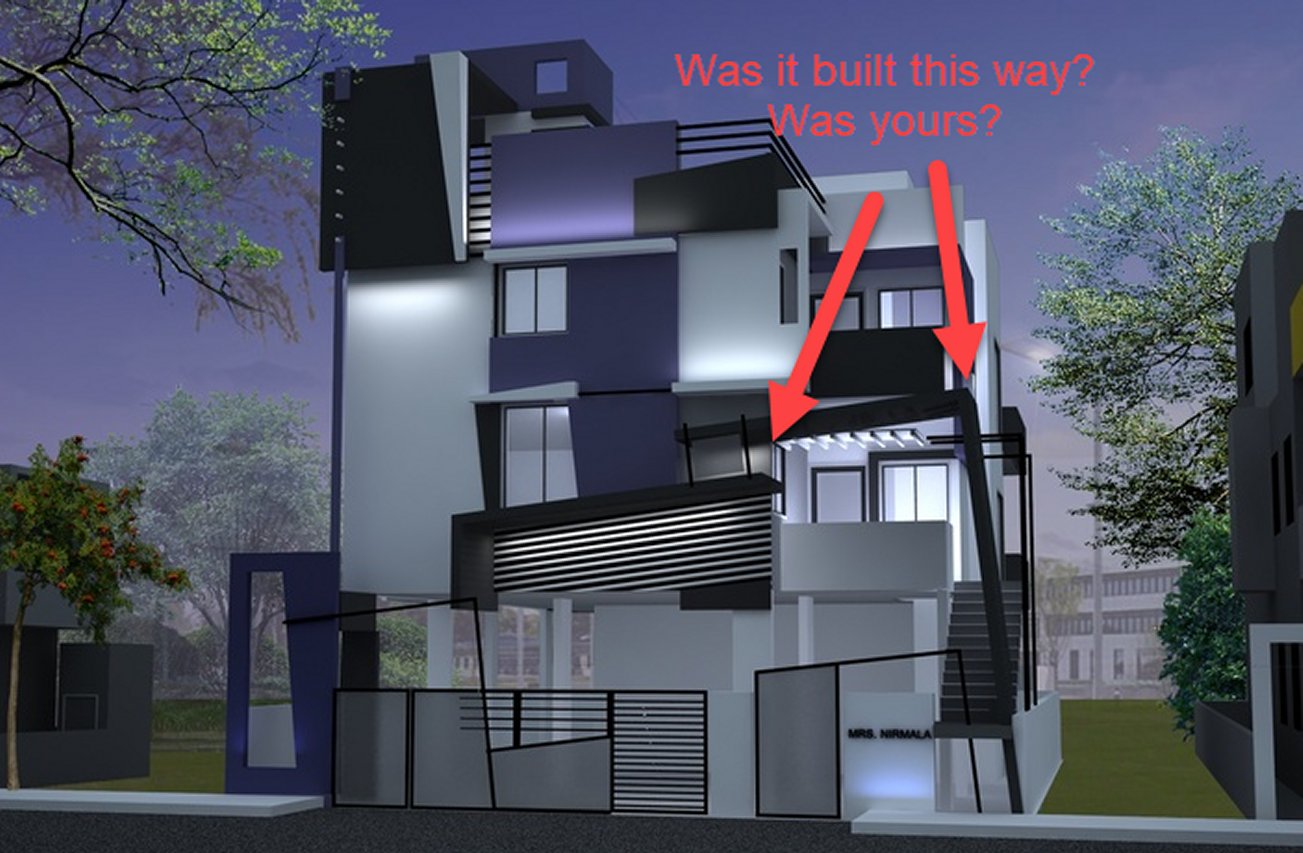Foundation elevations are the Number one scam in foundation repair!
Reading this may well save you a bunch of money and help you avoid a lot of grief.
Just about every foundation company sells piers, that is how they make the majority of their profits. Buildings, need to have “settled” or fallen to benefit from repairs using piers.
Therefore it is in a pier salesman best interest for the homeowner to believe that settlement has occurred on every home they look at.
The problem is that most structures in North Texas, including homes, have not settled! Most buildings that show movement have experienced upheaval. Piers can not stop or reverse “upheaval", which is lifting or rising of a localized area of the foundation due to moisture causing an increase in soil volume.
It is to the foundation companies’ and their commissioned salespeople's advantage to have potential customers think that all foundation movement is really settlement. By using foundation elevations, without a benchmark, repair companies can present an illusion that the building has settled.
To sum it up read this.
Remember, concrete should not be poured in damp soil.
Moving foundations were usually poured while the soil had contracted in volume during a long dry spell or drought.
Also most of North Texas is hilly and the chances are, rain water will stand on one side of the structure and runoff on the other side.
The clay soil where the water stands will swell around and under the foundation. Where it runs off it will not have time to swell.
This increase in volume, in most cases cause the foundation to twist, transferring weight inside the home causing cracks, doors to stick and uneven floors as it progresses inside.
Often, left untreated. cracks and separations will develop in outside wall covering. Piers are not the short or long term answer.
Want a more complete explanation? Call/text me@ 817-308-8186.

Using leveling devices
One must have the "as built" original elevations to determine if a foundation has settled in one area, heaved in the other, or the slab was poured that way.
In other words, you can’t tell if it has gone up or has gone down without original elevations.
When the commissioned salesman wants to show the building to appear to have settled, they put the zero mark at the high point on the foundation.
If you are selling piers you never want to call a low point zero. Since they want to sell piers, they will make it appear that settlement is the problem.
Foundation companies do this to customers every day. This is how they convince homeowners to buy piers they don’t need.
These unneeded piers are not only quite expensive but will usually cause additional problems later on. Call me and I will explain how. Richard 817-308-8186.
The real reason that there are so many foundation repair failures is not necessarily because piers failed, but because piers were installed when and where they should not have been. And guess what, your warranty will not usually cover that mistake.
You bought them, you own them!
Contact me and I will explain it all. The manipulation of elevations is one of the biggest frauds in the foundation industry. In areas of expansive soils, upheaval is more often the cause of foundation movement than settlement. In North Texas, concrete beams, in both slab and pier and beam (crawl space) construction are designed to be supportive and protect against settlement from minor voids under beams. Expanding soils, on the other hand, are able to push areas of the slab up, essentially causing the same damage signs as settlement, only effective repairs are completely different.
Design Flaw!
Foundations are designed to flex. Building materials are not!

Foundation repair elevations of slab foundation.
This computerized level is a wonderful instrument used my most everyone in North Texas to take elevations. The problem is that when being used to try and understand foundation movement, the instrument alone can not provide the information needed. To make a determination whether a foundation needs to be lifted, where it would need to be lifted or how much it needed to be lifted, one must have original elevations from time of construction to tell what's up, what's down, where and how much. Understand, concrete in not poured in moist soils, so if movement occurred, and remember only a small percentage of all homes experience foundation movement, the soil was likely in a contracted condition when the foundation was poured. Later rains, likely ponding next to the home, caused the soil to swell back to a pre-construction volume, possibly continue to keep the soil swelling then shrinking and swelling again until the moisture problem is solved. In many of these situations the job fails, the home moves again and the warranty does not cover upheaval! Contact me, I'll tell you all about it.

Computerized level.
See what my customers say: Testimonials. Here are : My Fees.
For additional information:
Contact me: Richard Rash at 817-308-8186.
“
Thanks for the newsletter. It was very timely because I getting ready to drop you an email with a report and a question. We have done all of the remedial work that you suggested (replacing the gutters and adjusting the drainage away from the foundation. I feel like we have done everything that you recommended. We have repaired the damage inside and have had no cracks since then. With all of the rains that we have had we stopped the soaker sessions, but having lived in this country all my life I know that the rains will not continue much longer. My question is, through the winter do we need to continue to use the soaker or are we good until summer comes along? Thanks again for all of your help. I am recommending you to everyone that I know that have foundation problems.
Chas
To Sign up for my occasional newsletter with tips on preventing, stopping and reversing Foundation Damage!
Copyright 2017, Company Name - Disclaimer
